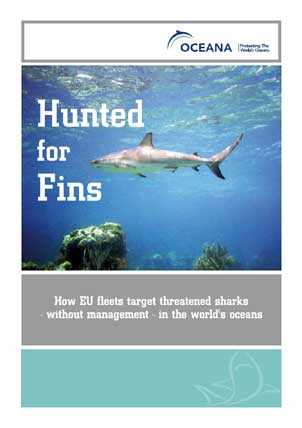Report | April, 2010
Hunted for fins: How EU fleets target threatened sharks – without management – in the world’s oceans
Traditionally, sharks were considered as bycatch in fisheries for highly migratory species like tuna and swordfish. That has changed. Pelagic sharks are now the targeted species of the European Union surface longline fleets.
Spain possesses, by far, the biggest European longline fleet. The Spanish longliners’ catch in the Atlantic Ocean consists of more than 67 per cent sharks. Swordfish makes up around 27 per cent and tuna is only a small portion of the catch in these Spanish Atlantic longline fisheries.
In 2005, European Union countries reported nearly 100,000 metric tons of shark catches in the world’s oceans. The main European shark fishing nation is Spain. In 2005, Spanish vessels had the highest shark catches in the European Union with 37,400 metric tons, followed by France and Portugal.
Even though European Union fleets land shark fins and carcasses, the hunt is economically driven by the growing demand for fins in China.
Nearly all Spanish and Portuguese reported shark catches come from directed shark longlining. Shark bycatch in other fisheries such as purse seining are not officially reported but still exist.
The main species taken by shark longliners in the Atlantic are blue shark, mako shark, thresher shark and hammerhead shark. Thresher and mako sharks are considered globally vulnerable by IUCN (World Conservation Union) Red List criteria, and the hammerhead shark is considered endangered. The blue shark, the world’s most abundant and heavily fished pelagic shark, is considered “near threatened”. Scientists have noted declines of 50-70 per cent of this species in the North Atlantic.




